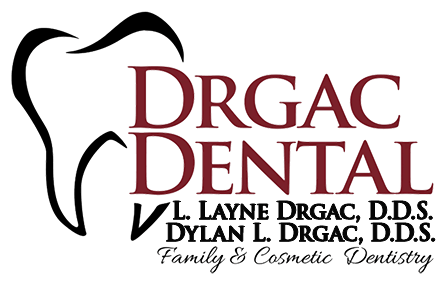Dental Education
KEEP YOUR SMILE HEALTHY & BRIGHT
Your dental habits are what determine the state of your smile and overall oral health. You most likely already brush and floss your teeth, but are you using the right techniques? Read through these tips to see if you’re properly protecting your dental health.
Brushing Your Teeth
Oral health begins with clean teeth, and clean teeth begin with proper brushing. Keeping your teeth and the area where your teeth meet your gums clean can help prevent gum disease and stave off cavities.
- Brush Twice A Day. Take your time when brushing your teeth. The general rule of thumb is to sing the Happy Birthday song in your head twice to make sure you’ve brushed the minimal amount of time required to do a good job.
- Get the Right Toothbrush and Toothpaste. Your toothbrush should fit your mouth comfortably and be soft-bristled so as to not over-irritate your gums. Electric toothbrushes make the process of brushing your teeth much easier and can be more beneficial than manual brushing. These toothbrushes clean those tough to reach spots of your teeth your regular toothbrush might have trouble reaching. They also help to reduce plaque buildup. These devices are also helpful if you have problems that make it difficult to brush effectively, such as arthritis.
- Fluoride Toothpaste. Fluoride toothpastes can help prevent tooth decay by slowing down the process of enamel erosion and preventing cavities.
- Proper Brushing Technique. Hold your toothbrush at a 45-degree angle, while aiming at the area your teeth meet your gums. Gently brush back-and-forth in short, tooth-wide motions. Remember to brush every side of your tooth—the outside, inside and chewing surfaces—as well as your tongue!
- Proper Toothbrush Maintenance. Remember to rinse your toothbrush after it’s been used, and keep it stored in an upright position. It’s best to have a divided toothbrush holder so as to not exchange any germs or bacteria between toothbrushes. Covering or keeping a toothbrush in an enclosed container can cause the growth of bacteria, yeast, and mold. Generally speaking, your toothbrush should be replaced every three to four months, or sooner if you notice extensive fraying.
Flossing Your Teeth
No matter how good your toothbrush is, it’s not going to reach the areas between each tooth and under the gumline. That’s where flossing comes into play. You should floss daily and utilize the following techniques when doing so:
- Get A Long Enough Piece. Break off about 18 inches—or around the length of your shoulder to your wrist—of dental floss. Wind all but a few inches around one middle finger, then the rest around the other middle finger. Then grip the floss between your thumbs and forefingers and begin!
- Be gentle! You shouldn’t bleed a lot from your gums if you’ve been flossing daily for a while now. Move the floss between your teeth—one at a time—using a rubbing motion. When the floss reaches your gumline, curve it around one tooth to get the area below that portion of the gumline. Remember to unwind fresh floss as you move from tooth to tooth.
- Keep Going! You should floss every day. If you find floss too difficult to use, you can use another interdental cleaner such as a pre-threaded flosser, a dental pick, a water flosser, etc.
As long as you do a thorough enough job, it doesn't matter if you brush or floss first.
Other Tips
Fluoride Mouthwash.
Consider using a fluoride mouthwash to prevent plaque buildup or the formation of cavities!
When to See the Dentist
To maintain proper dental hygiene and oral health, you should have scheduled regular dental visits for cleanings and exams. Doing so can help prevent gum disease and other oral issues. Outside of scheduled visits, contact your dentist if you notice anything out of the ordinary such as:
- Red or swollen gums
- Bleeding gums
- Loose permanent teeth
- Bad breath that won’t go away along with a strange taste in your mouth
- Trouble swallowing
- Gums that seem to be pulling away from your teeth
- Mouth ulcers or sores
Early detection and treatment can help ensure a lifetime of good oral health!
Teeth cleaning for families in Caldwell, TX
Drgac Dental is a respected dental clinic that you can count on to deliver the highest level of oral care to you and your family. Young or old, learning about the importance of a healthy mouth is crucial to your overall health and well-being. During your regular checkup, we’ll take digital x-rays
to check for any dental problems, perform teeth cleaning
and advise you on how you can improve or maintain your oral health. To discover the benefits of healthy teeth and gums, get in touch with our dental professionals at Drgac Dental - call 979-567-3273.

